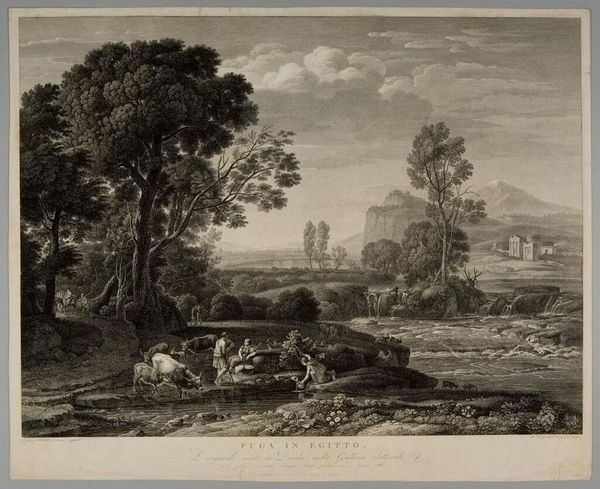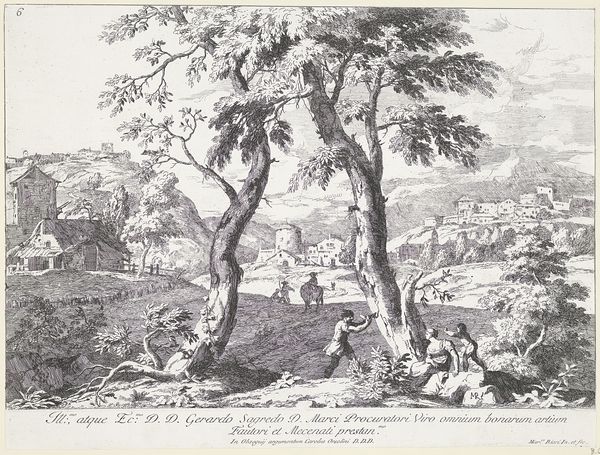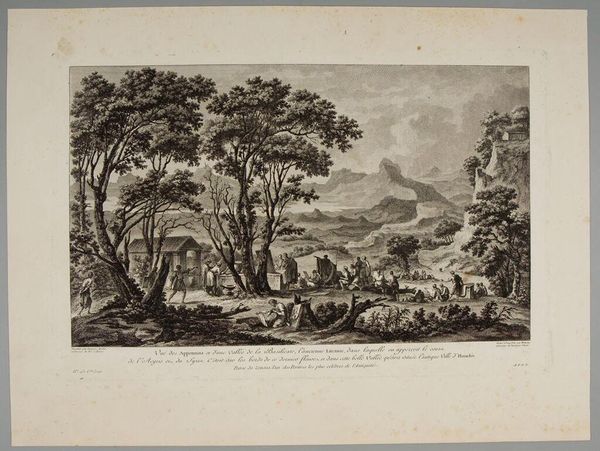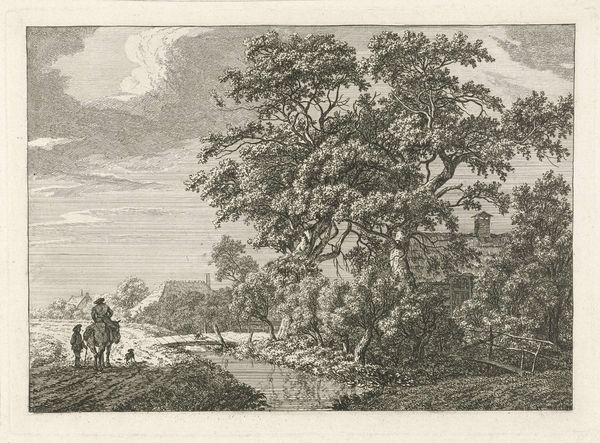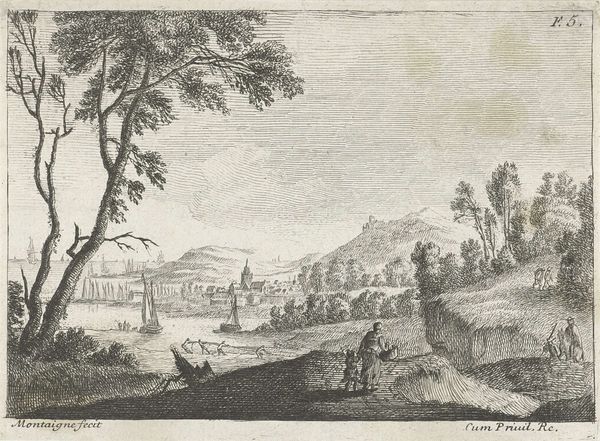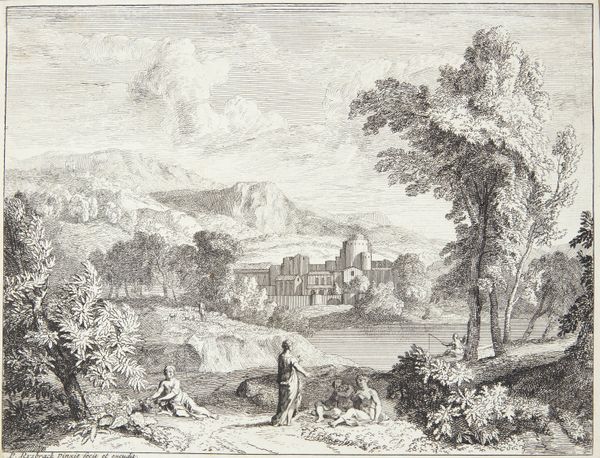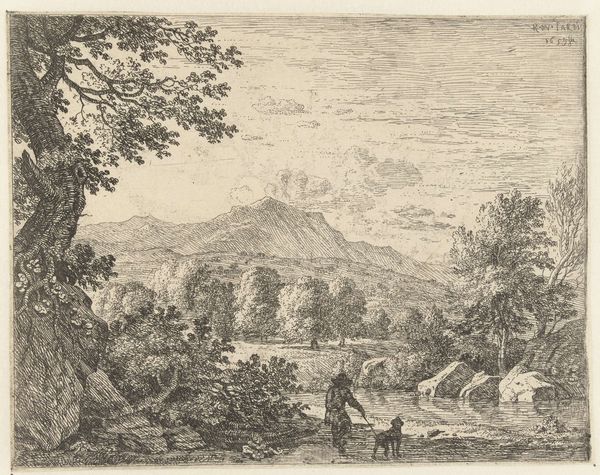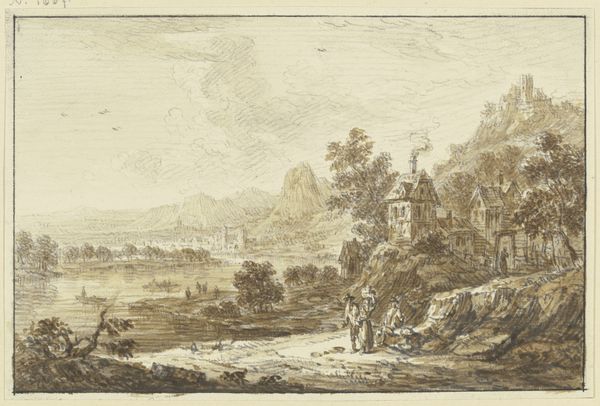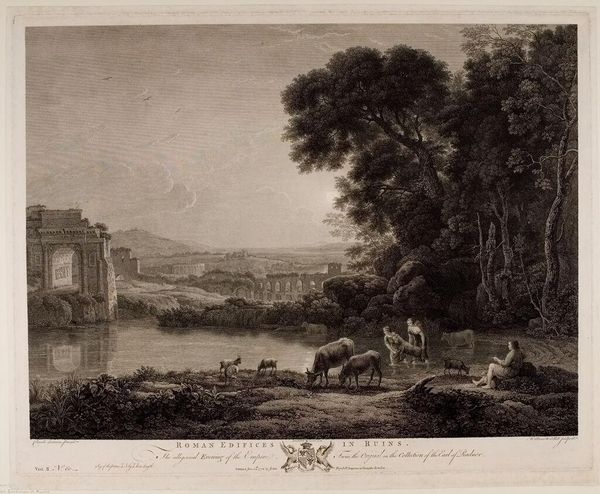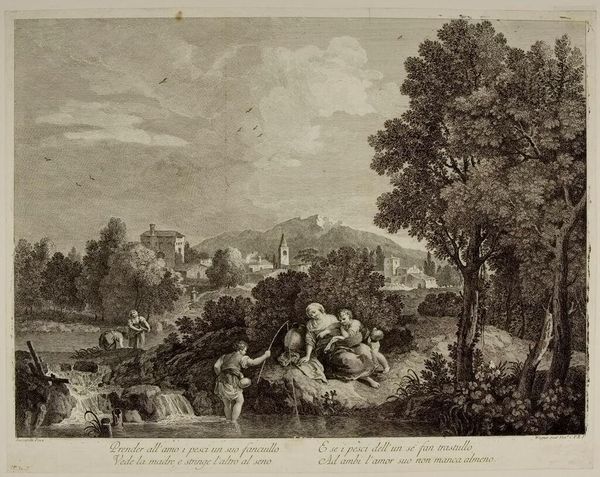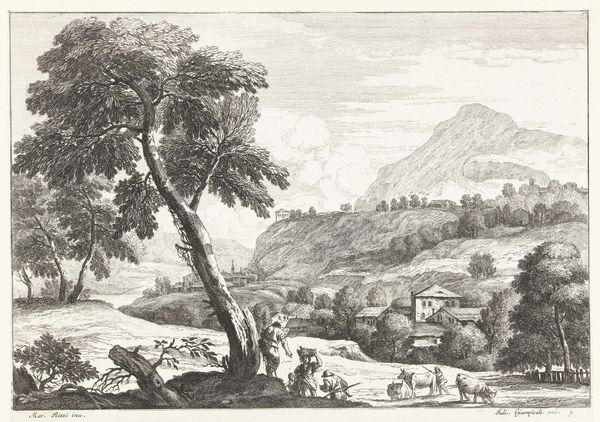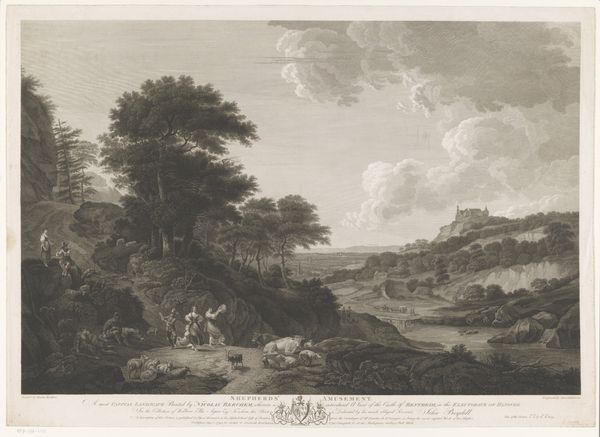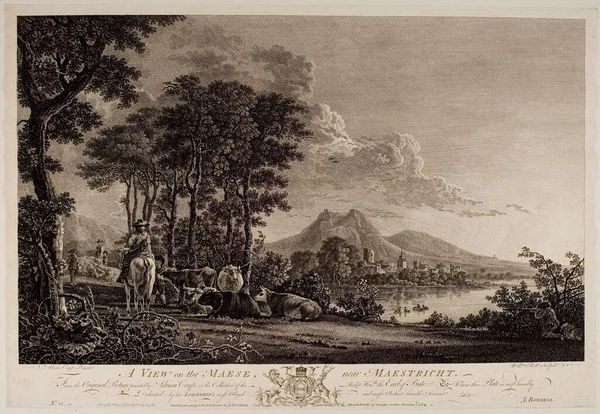
print, etching
# print
#
etching
#
landscape
#
genre-painting
#
realism
Dimensions: height 361 mm, width 469 mm
Copyright: Rijks Museum: Open Domain
Curator: Fabio Berardi's etching, "Landschap met dorp aan meer," created sometime between 1738 and 1767, offers a captivating glimpse into a serene lakeside village. My immediate impression is one of quiet observation; the scene feels both idyllic and somehow melancholic. Editor: The muted tones created by the etching highlight a socio-economic division in plain sight, contrasting laborers with people of stature. What materials would have been available, what paper stock, how the work was made for profit all create further points to consider. Curator: That's an interesting point. The village itself, dominated by a church spire, nestles against a steep hillside, perhaps representing enduring faith and earthly authority, wouldn’t you say? Notice how it overlooks the figures in the foreground? Are they toiling near the water's edge or simply pausing in their daily tasks? What meaning do you read from their depiction? Editor: Perhaps the presence of donkeys also shows they are moving wares? This may not simply be genre, but documentation, to the production chain and those participating. Etchings at the time became both disposable and tradable materials for wider culture. Curator: Absolutely, and I also note the inscription beneath the image which roughly translates to "Perhaps he who seeks the bottom knows less. Because deceptions and great trade in the world." This adds another layer of commentary to the depicted scene. Are we looking at honest labor or something more… morally ambiguous? Editor: Very good. So what materials were utilized, where this landscape took place and how these things interacted would certainly further guide an informed decision as to what can be stated. Curator: I see what you mean about that process enriching any attempt to understand the symbols depicted, and by thinking in terms of production, we arrive at this work having layers. It's so easy to be pulled in. Editor: Yes, it does! By seeing material, culture and location, you begin to think even bigger than you originally imagined!
Comments
No comments
Be the first to comment and join the conversation on the ultimate creative platform.
